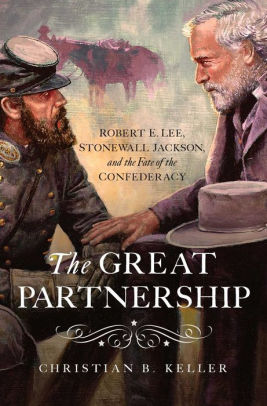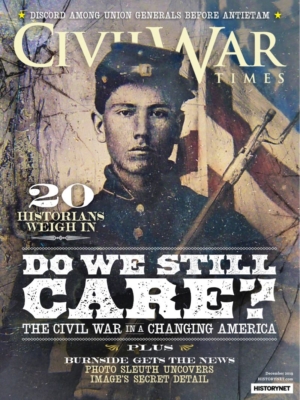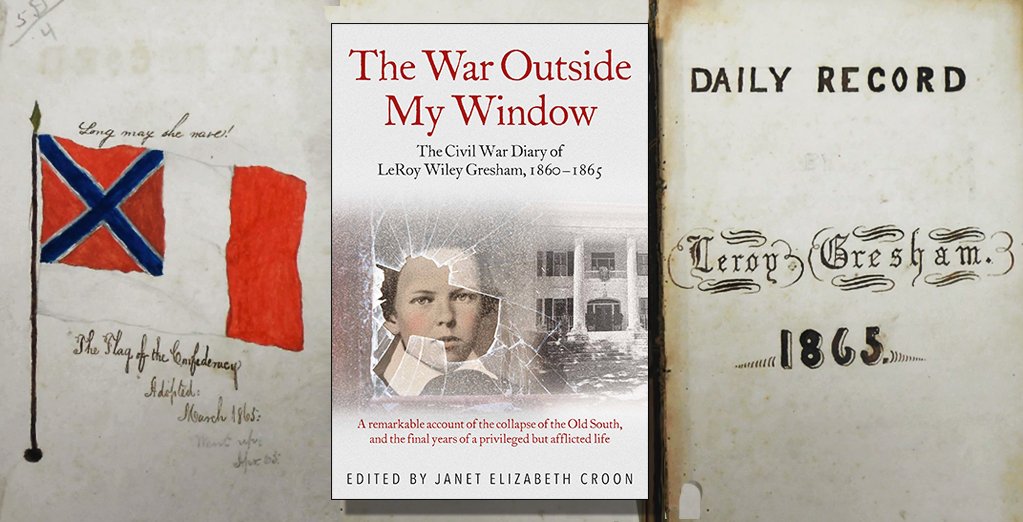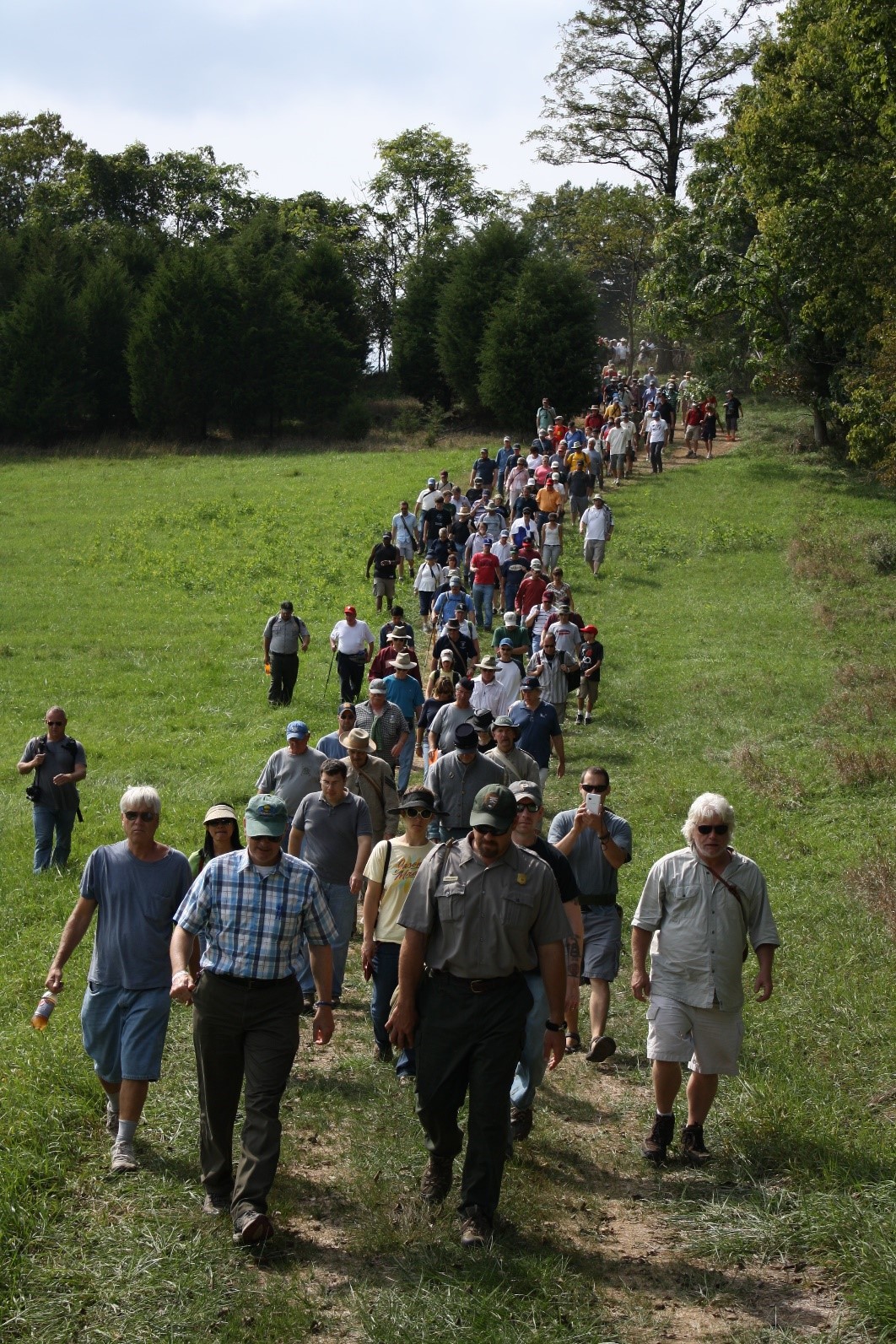 Poetry Not Yet Written: Revisiting Glory Thirty Years Later
Poetry Not Yet Written: Revisiting Glory Thirty Years Later
Ella Starkman-Hyne, December 10, 2019 at Muster: The Web Log of the Society of Civil War Historians
Glory begins as so many Civil War films do: the sun rises on a vast battlefield, brave Union men march into war, and a ferocious battle ensues, American and Confederate flags billowing in the background. Despite its adherence to well-worn tropes, however, Glory tells a tale that is often obscured – even obliterated – in Civil War narratives. Edward Zwick’s 1989 classic follows the story of the 54th Massachusetts Infantry, one of the first African American regiments to fight for the Union cause. Viewed within the larger canon of Civil War films, Glory is a triumph. Most of these narratives sidestep the issue of slavery in order to appeal to the widest possible audience; Glory, in contrast, never lets the viewer forget that this truly was a war of emancipation. This laudable achievement aside, though, Glory has many significant shortcomings. And, as the film celebrates its thirtieth anniversary this December, it is well worth asking the question: who gets to tell this story?Given Glory’s subject matter, the viewer could reasonably expect the men of the 54th Massachusetts to take center stage. Yet, mere moments into the film, it becomes clear that Glory is, in many ways, the story of the regiment’s white colonel, Robert Gould Shaw (Matthew Broderick). The powerful narration of the film is drawn from Shaw’s real-life letters home, affording the viewer intimate access to the colonel’s thoughts, fears, and hopes. Never mind that the men of the 54th also wrote letters home – this fact is never imagined, much less acknowledged, and the viewer remains wholly unaware of the inner lives of the black men at the heart of the story. This negligence has significant consequences in Glory, and no small amount of unintended irony. At the beginning of the film, Shaw declares with evident self-satisfaction: “We fight for men and women whose poetry is not yet written.” In fact, there was a well-established tradition of African American poetry by this time in American history, a literary movement that included the voices of both free and enslaved black people.[1] The poetry of these men and women was indeed being written – Colonel Robert Gould Shaw simply wasn’t reading it.[2]
 The men of the 54th are immensely compelling characters in their own right, yet Glory’s
depiction of the regiment’s black soldiers never quite reaches the
depth and nuance it reserves for its white protagonist. This lapse is
most painfully evident in the case of Trip (Denzel Washington), a
composite character based on several real-life soldiers who came to the
unit as former slaves. Trip is a quick-tempered and confrontational man,
who refuses to back down in the face of authority. In one of the film’s
most significant moments, he turns down the honor of carrying the
American flag into battle, defiantly telling Colonel Shaw: “I ain’t
fighting this war for you, sir.” As powerful as Trip’s character is
(Washington would win an Academy Award for his portrayal), the viewer’s
insight into his lived experience remains quite limited. The few
conversations touching on his enslavement are filled with tense
silences, and the true contours of his suffering are never fully
explored. This superficial portrayal of Trip’s life – whether a matter
of intention or oversight by Glory’s producers – was a missed
opportunity; even in the 1980s, there was no dearth of literature on
slavery the filmmakers and screenwriters could have used for research.
The men of the 54th are immensely compelling characters in their own right, yet Glory’s
depiction of the regiment’s black soldiers never quite reaches the
depth and nuance it reserves for its white protagonist. This lapse is
most painfully evident in the case of Trip (Denzel Washington), a
composite character based on several real-life soldiers who came to the
unit as former slaves. Trip is a quick-tempered and confrontational man,
who refuses to back down in the face of authority. In one of the film’s
most significant moments, he turns down the honor of carrying the
American flag into battle, defiantly telling Colonel Shaw: “I ain’t
fighting this war for you, sir.” As powerful as Trip’s character is
(Washington would win an Academy Award for his portrayal), the viewer’s
insight into his lived experience remains quite limited. The few
conversations touching on his enslavement are filled with tense
silences, and the true contours of his suffering are never fully
explored. This superficial portrayal of Trip’s life – whether a matter
of intention or oversight by Glory’s producers – was a missed
opportunity; even in the 1980s, there was no dearth of literature on
slavery the filmmakers and screenwriters could have used for research.Furthermore, Trip’s fury is often tempered – even invalidated – by his colleagues in the 54th. John Rawlins (Morgan Freeman) takes issue with Trip’s aggrieved demeanor throughout the film, chastising him for being “full of hate” merely because he’s “been whipped and chased by hounds.” In case Trip misses the point, Rawlins declares: “that might not be living, but it sure as hell ain’t dying. And dying’s been what these white boys have been doing for going on three years now, dying by the thousands, dying for you, fool.” This statement is distressing for two reasons: first, Rawlins denies Trip the right to be angry, asserting that the horrors he experienced as a slave do not justify his bitter outlook and, moreover, do not match the ultimate sacrifice made by “these white boys.” Furthermore, the assertion that white men had been dying for African Americans throughout the Civil War is deeply flawed, given that many Union soldiers joined the war effort purely to fight secession and did not, in fact, support the cause of emancipation; some even deserted when President Lincoln issued the Emancipation Proclamation.[3]
Over the past thirty years, historians have generally praised Glory for its historical accuracy, its skillful depiction of the war’s oft-forgotten heroes, and its refusal to adhere to Lost Cause ideologies. Shortly after the film’s cinematic release, Pulitzer-Prize winning Civil War historian James McPherson wrote a review of Glory in The New Republic, citing it as “the most powerful and historically accurate movie about that war ever made.”[4] McPherson wrote that Glory would “throw a cold dash of realism over the moonlight-and-magnolias portrayal of the Confederacy,” and might even restore the heroic image of black soldiers which prevailed in the North for a brief time during and after the war, before the Lost Cause became entrenched.[5]
Nearly two decades later, the historian Gary Gallagher made similar observations about Glory in his book, Causes Won, Lost, & Forgotten: How Hollywood and Popular Art Shape What We Know about the Civil War. Gallagher’s analysis focuses primarily on Glory’s depiction of the Civil War as a battle of emancipation, noting that Hollywood films since the late 1980s have largely dismissed preservation of the Union as a central motivator for Northern soldiers. This artistic license, Gallagher writes, often comes at the cost of historical accuracy, effectively promoting a “flawed conception of the North’s Civil War,” given that many white soldiers were ambivalent toward the cause of emancipation.[6] This negligence notwithstanding, Gallagher maintains that Glory had a positive and tangible impact. He notes that even its star, Denzel Washington, had been unaware that black people fought in the Civil War. Washington was hardly alone; Gallagher writes that “moviegoers across the United States left screenings with a similar realization that the military struggle between 1861 and 1865 had not been a lily-white affair. In that respect, Glory worked a sea change in popular perceptions about the conflict.”[7]
 McPherson and Gallagher have certainly made valuable contributions to the conversation about Glory.
However, their respective analyses overlook a vital aspect of the
film’s legacy: the framing of the 54th’s story though Colonel Shaw’s
perspective. For decades, sociologists and black theorists have explored
the implications of black stories being told by white storytellers,
often referred to as “racial ventriloquism.”[8] Claire Oberon Garcia, Vershawn Ashanti Young, and Charise Pimentel examine this topic in their book, From Uncle Tom’s Cabin to The Help: Critical Perspectives on White-Authored Narratives of Black Life.
These scholars note that white-authored narratives are frequently “used
to structure perceptions of American race relations, particularly black
racial experiences,” while the work of black writers rarely achieves
such dominance.[9]
The authors assert that this cultural hegemony persists despite the
continuing efforts of black storytellers. Although black writers,
filmmakers, television producers, and scriptwriters have depicted both
black and white stories through mainstream media, their works seldom
achieve the level of financial success granted to white-authored
narratives, “and thus do not figure greatly in Americans’ understanding
of race in general and black experiences in particular.”[10]
These white writers – no matter how well-intentioned – are thus
culpable in a “long history of constructing ‘blackness’ to serve
hegemonic concerns,” a tradition which effectively denies black people
the agency to tell their own stories.[11]
McPherson and Gallagher have certainly made valuable contributions to the conversation about Glory.
However, their respective analyses overlook a vital aspect of the
film’s legacy: the framing of the 54th’s story though Colonel Shaw’s
perspective. For decades, sociologists and black theorists have explored
the implications of black stories being told by white storytellers,
often referred to as “racial ventriloquism.”[8] Claire Oberon Garcia, Vershawn Ashanti Young, and Charise Pimentel examine this topic in their book, From Uncle Tom’s Cabin to The Help: Critical Perspectives on White-Authored Narratives of Black Life.
These scholars note that white-authored narratives are frequently “used
to structure perceptions of American race relations, particularly black
racial experiences,” while the work of black writers rarely achieves
such dominance.[9]
The authors assert that this cultural hegemony persists despite the
continuing efforts of black storytellers. Although black writers,
filmmakers, television producers, and scriptwriters have depicted both
black and white stories through mainstream media, their works seldom
achieve the level of financial success granted to white-authored
narratives, “and thus do not figure greatly in Americans’ understanding
of race in general and black experiences in particular.”[10]
These white writers – no matter how well-intentioned – are thus
culpable in a “long history of constructing ‘blackness’ to serve
hegemonic concerns,” a tradition which effectively denies black people
the agency to tell their own stories.[11]In cinema, such narratives are often referred to as “white savior films.” Sociologist Matthew Hughey investigates this phenomenon in his book, The White Savior Film: Content, Critics, and Consumption. He writes that these stories are “often guided by a logic that racializes and separates people into those who are redeemers (whites) and those who are redeemed or in need of redemption (nonwhites).”[12] White savior films can have profound societal consequences. Hughey cites studies on the lack of interracial communication in many predominantly white areas in the United States, noting that 86 percent of suburban whites live in communities where black people make up fewer than 1 percent of the population.[13] In this context, he asserts, popular films become a kind of proxy for real-life interracial interactions. [14] This framework is certainly at work in Glory. Although the film depicts the 54th Massachusetts as a regiment of former slaves, the majority of the soldiers were, in fact, born free in the North.[15] Such a depiction paves the way for a falsified journey from slavery to freedom, a journey not possible without the fearless leadership of their white colonel (and white savior), Robert Gould Shaw.
The makers of Glory were certainly telling a story that needs to be told – but it is not their story to tell. Indeed, as Glory celebrates its thirtieth anniversary this December, it is worth taking a closer look at whose voices are being heard, both onscreen and behind the scenes (Glory having been written, directed, and produced by white men). In accepting the premise that the poetry of black Americans had “not yet been written,” Glory ensures that whatever poetry it does present is that of its white hero and savior. Viewers must question why, in a film specifically about black soldiers, the perspectives of African Americans are so conspicuously absent. In recent years, many historians have begun to call for a new Civil War documentary, one in which Shelby Foote’s romanticized view of the Old South is not the dominant voice. Perhaps it is also time for a new Glory, a version devoid of “racial ventriloquism,” in which the men of the Massachusetts 54th are not only free from slavery, but free to tell their own stories.
[1] Erika DeSimone and Fidel Louis, Voices beyond Bondage: an Anthology of Verse by African Americans of the 19th Century (Montgomery: NewSouth Books, 2014).
[2] Katie O’Halloran Brown, “Letters of Black Soldiers from Ohio Who Served in the 54th and 55th Massachusetts Volunteer Infantries during the Civil War,” Ohio Valley History 16, no. 3 (2016): 72-79.
[3] James M. McPherson, For Cause and Comrades: Why Men Fought in the Civil War (New York: Oxford University Press, 1997), 123.
[4] James M. McPherson, “TNR Film Classic: ‘Glory’ (1990),” The New Republic, January 15, 1990, https://newrepublic.com/article/91210/tnr-film-classics-glory-january-15-1990.
[5] Ibid.
[6] Gary W. Gallagher, Causes Won, Lost, and Forgotten: How Hollywood and Popular Art Shape What We Know about the Civil War (Chapel Hill: University of North Carolina Press, 2008), 92.
[7] Ibid., 95.
[8] Claire Oberon Garcia, Vershawn Ashanti Young, and Charise Pimentel, From Uncle Tom’s Cabin to the Help: Critical Perspectives on White-Authored Narratives of Black Life (New York: Palgrave Macmillan, 2015), 1.
[9] Ibid., 1-2.
[10] Ibid., 2.
[11] Ibid., 4.
[12] Matthew W. Hughey, The White Savior Film: Content, Critics, and Consumption (Philadelphia: Temple University Press, 2014), 2.
[13] Ibid., 15.
[14] Ibid.
[15] Joseph T. Glatthaar, “‘Glory,’ the 54th Massachusetts Infantry, and Black Soldiers in the Civil War,” The History Teacher 24, no. 4 (1991): 475-85, 478.
Images: Denzel Washington in Glory. Courtesy of Tristar Pictures.; Matthew Broderick, who portrayed Robert Gould Shaw in Glory. Courtesy of Tristar Pictures; Promotional poster for Glory. Courtesy of Tristar Pictures.










